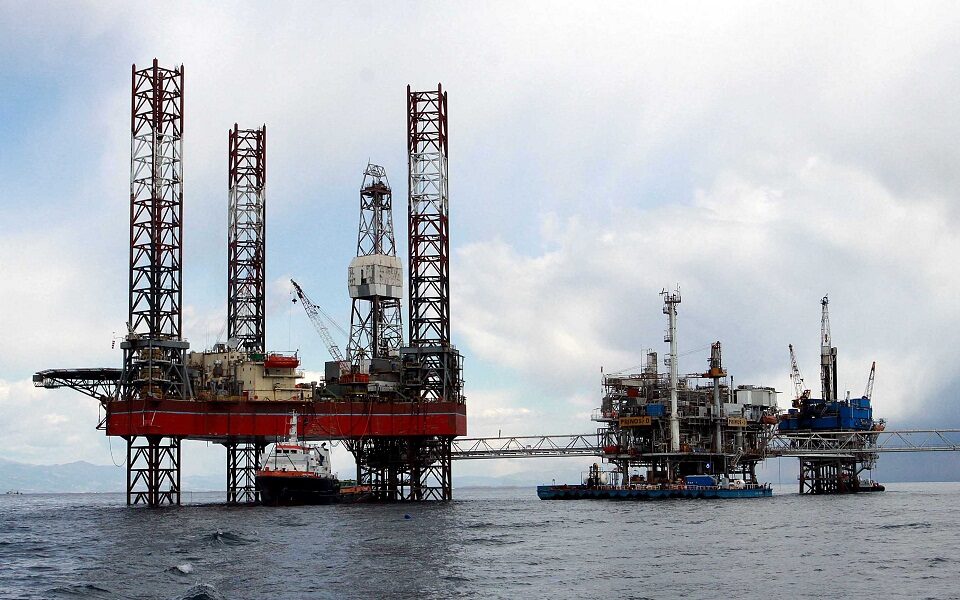CO2 storage at Prinos field | eKathimerini.com
CO2 storage at Prinos field Kathimerini English Edition


Carbon Capture and Storage (CCS) Projects in the European Union

Carbon capture and storage (CCS) projects are at the focus of the European Union, as they are seen as an inevitable part of the solution for the decarbonization of industrial facilities.
The Role of CCS Technology
The technology, known to oil companies since the 1970s, makes it possible to reduce carbon dioxide pollution caused by fossil fuels, without having to replace them. It can capture CO2 emitted by a fossil-fueled plant, compress it and transport it to suitable geological formations for storage.
Greece’s Inclusion of CCS Technology
Greece has included CCS technology in the energy and climate plan (ESEK) and indeed the committee responsible for the revision of ESEK has brought forward the first projects to capture and use or store 1.4 million tons of CO2 per year to 2030. In the November draft of ESEK, the first works appeared after 2035.
The Prinos CO2 Storage Project
The largest project that Greece is developing is the Prinos CO2 Storage, which belongs to the Energean company. It is the only project currently being developed in the Eastern Mediterranean and one of three projects being developed overall in the European South, along with that of Ravenna, Italy and the Pyrenees.
Inclusion in EU Projects of Common Interest (PCI)
The Greek project was officially included in the list of EU projects of common interest (PCI) and according to competent sources, by the end of June it is expected that the application for a CO2 storage license – accompanied by the relevant technical studies – will be submitted to the Hellenic Hydrocarbons and Energy Resources Management Company (EDEFEP), which will then be sent to the European Commission for evaluation. Under the exploration permit, Energean has until August 2025 to complete the exploration of the CO2 storage potential.
Energean’s Design and Phases
Energean’s design includes the construction of storage space in a depleted Prinos field, with an absorption capacity of 2.5 to 3 million tons of CO2 per year in full operation. The first phase, for a capacity of approximately 1 million tons per year, is expected to start in 2026, with a gradual acceleration of CO2, while the second phase (up to 3 million tons) will follow in 2028.
Subsidy for Construction
For the construction of the space at Prinos, a subsidy of 150 million euros is pledged through the Recovery and Resilience Fund.
SDGs, Targets, and Indicators
| SDGs | Targets | Indicators |
|---|---|---|
| SDG 7: Affordable and Clean Energy | Target 7.2: Increase the share of renewable energy in the global energy mix | No specific indicators mentioned in the article |
| SDG 9: Industry, Innovation, and Infrastructure | Target 9.4: Upgrade infrastructure and retrofit industries to make them sustainable | No specific indicators mentioned in the article |
| SDG 13: Climate Action | Target 13.1: Strengthen resilience and adaptive capacity to climate-related hazards | No specific indicators mentioned in the article |
| SDG 14: Life Below Water | Target 14.2: Sustainably manage and protect marine and coastal ecosystems | No specific indicators mentioned in the article |
| SDG 15: Life on Land | Target 15.5: Take urgent and significant action to reduce degradation of natural habitats | No specific indicators mentioned in the article |
1. Which SDGs are addressed or connected to the issues highlighted in the article?
- SDG 7: Affordable and Clean Energy
- SDG 9: Industry, Innovation, and Infrastructure
- SDG 13: Climate Action
- SDG 14: Life Below Water
- SDG 15: Life on Land
The article discusses carbon capture and storage (CCS) projects, which are related to the transition to affordable and clean energy (SDG 7) and the need to upgrade infrastructure and retrofit industries for sustainability (SDG 9). Additionally, CCS projects contribute to climate action (SDG 13) by reducing carbon dioxide pollution. The projects also have implications for the protection of marine and coastal ecosystems (SDG 14) and the reduction of degradation of natural habitats (SDG 15).
2. What specific targets under those SDGs can be identified based on the article’s content?
- Target 7.2: Increase the share of renewable energy in the global energy mix
- Target 9.4: Upgrade infrastructure and retrofit industries to make them sustainable
- Target 13.1: Strengthen resilience and adaptive capacity to climate-related hazards
- Target 14.2: Sustainably manage and protect marine and coastal ecosystems
- Target 15.5: Take urgent and significant action to reduce degradation of natural habitats
Based on the article, the specific targets that can be identified include increasing the share of renewable energy in the global energy mix (Target 7.2), upgrading infrastructure and retrofitting industries for sustainability (Target 9.4), strengthening resilience and adaptive capacity to climate-related hazards (Target 13.1), sustainably managing and protecting marine and coastal ecosystems (Target 14.2), and taking urgent and significant action to reduce degradation of natural habitats (Target 15.5).
3. Are there any indicators mentioned or implied in the article that can be used to measure progress towards the identified targets?
No specific indicators are mentioned or implied in the article that can be used to measure progress towards the identified targets.
Behold! This splendid article springs forth from the wellspring of knowledge, shaped by a wondrous proprietary AI technology that delved into a vast ocean of data, illuminating the path towards the Sustainable Development Goals. Remember that all rights are reserved by SDG Investors LLC, empowering us to champion progress together.
Source: ekathimerini.com

Join us, as fellow seekers of change, on a transformative journey at https://sdgtalks.ai/welcome, where you can become a member and actively contribute to shaping a brighter future.







